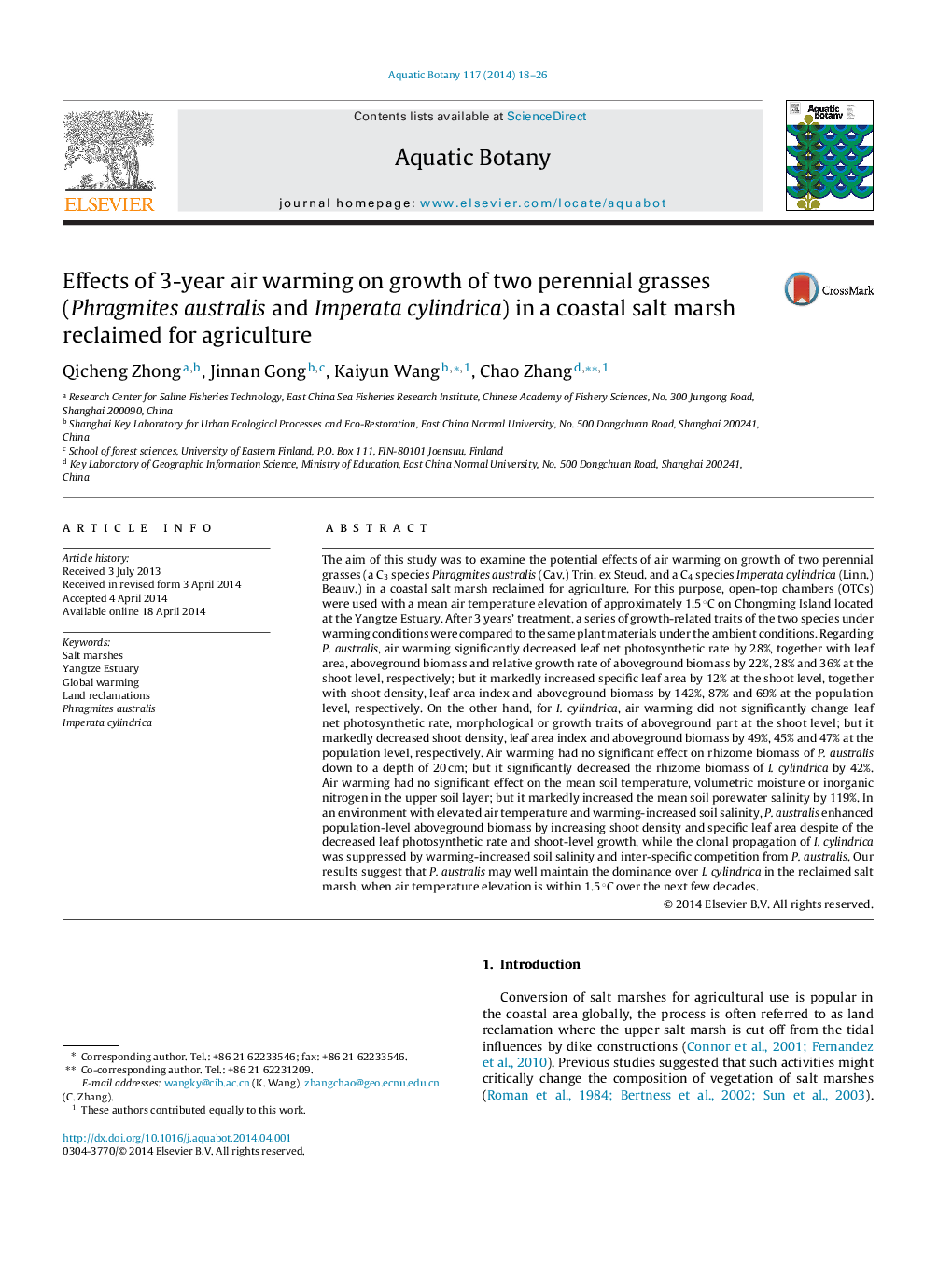| Article ID | Journal | Published Year | Pages | File Type |
|---|---|---|---|---|
| 4527829 | Aquatic Botany | 2014 | 9 Pages |
•Effects of 3-year air warming on growth of two perennial grasses are investigated.•Air warming increases aboveground biomass of P. australis at the population level.•Air warming decreases aboveground biomass of I. cylindrica at the population level.•Air warming increases the soil salinity in the reclaimed coastal saltmarsh.•The C3 grass P. australis will have priority compared to the C4 grass I. cylindrica in the case of air warming.
The aim of this study was to examine the potential effects of air warming on growth of two perennial grasses (a C3 species Phragmites australis (Cav.) Trin. ex Steud. and a C4 species Imperata cylindrica (Linn.) Beauv.) in a coastal salt marsh reclaimed for agriculture. For this purpose, open-top chambers (OTCs) were used with a mean air temperature elevation of approximately 1.5 °C on Chongming Island located at the Yangtze Estuary. After 3 years’ treatment, a series of growth-related traits of the two species under warming conditions were compared to the same plant materials under the ambient conditions. Regarding P. australis, air warming significantly decreased leaf net photosynthetic rate by 28%, together with leaf area, aboveground biomass and relative growth rate of aboveground biomass by 22%, 28% and 36% at the shoot level, respectively; but it markedly increased specific leaf area by 12% at the shoot level, together with shoot density, leaf area index and aboveground biomass by 142%, 87% and 69% at the population level, respectively. On the other hand, for I. cylindrica, air warming did not significantly change leaf net photosynthetic rate, morphological or growth traits of aboveground part at the shoot level; but it markedly decreased shoot density, leaf area index and aboveground biomass by 49%, 45% and 47% at the population level, respectively. Air warming had no significant effect on rhizome biomass of P. australis down to a depth of 20 cm; but it significantly decreased the rhizome biomass of I. cylindrica by 42%. Air warming had no significant effect on the mean soil temperature, volumetric moisture or inorganic nitrogen in the upper soil layer; but it markedly increased the mean soil porewater salinity by 119%. In an environment with elevated air temperature and warming-increased soil salinity, P. australis enhanced population-level aboveground biomass by increasing shoot density and specific leaf area despite of the decreased leaf photosynthetic rate and shoot-level growth, while the clonal propagation of I. cylindrica was suppressed by warming-increased soil salinity and inter-specific competition from P. australis. Our results suggest that P. australis may well maintain the dominance over I. cylindrica in the reclaimed salt marsh, when air temperature elevation is within 1.5 °C over the next few decades.
